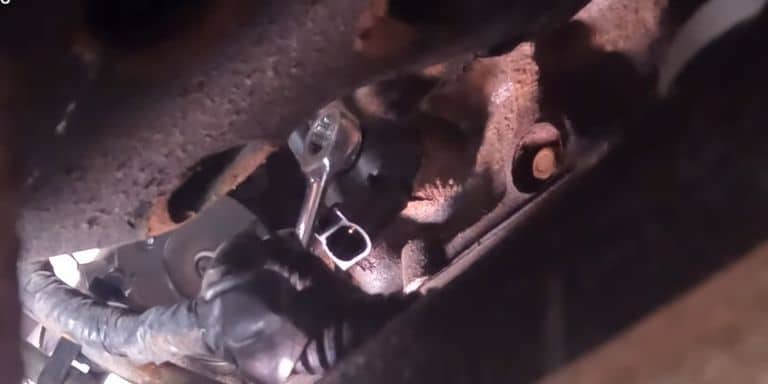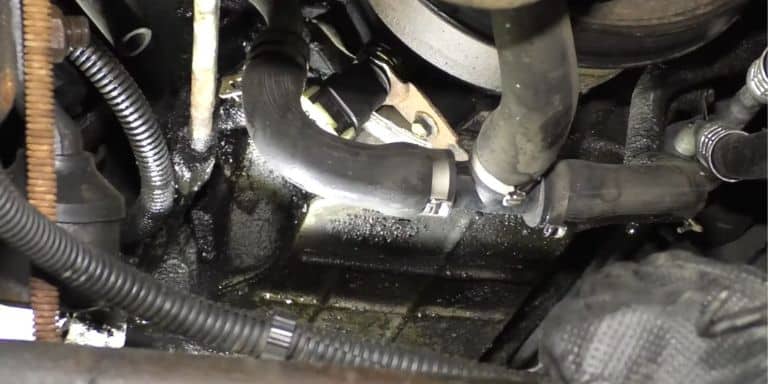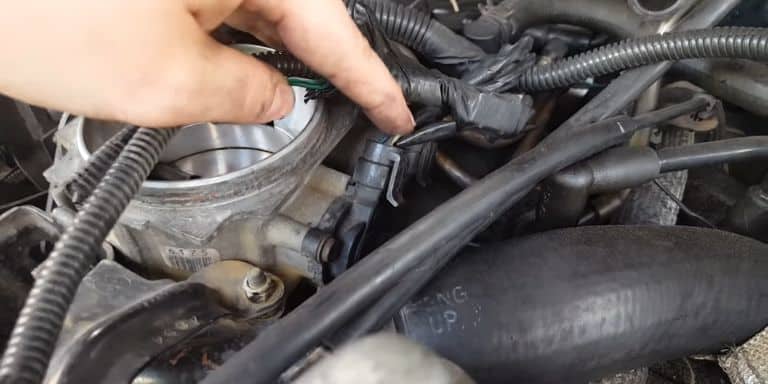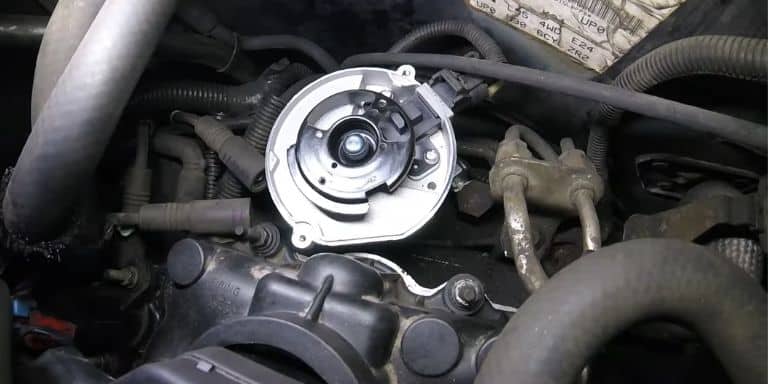Having accurate information about the location of different sensors in your vehicle, especially the engine area, can make DIY auto maintenance a lot easier.
The same thing holds for the 4.3 Vortec engine.
As reliable and long-lasting as it is, there’ll be occasional issues down the road leading to issues like hard start-up, vehicle sputtering during acceleration, or intermittent Check Engine warning light.
The good thing is that these issues mostly occur due to malfunctioning in one of the sensors related to the engine.
This malfunction happens due to dust, debris, and physical damage and causes the engine not to work up to its potential.
These sensors are relatively easier to fix and usually cost less than 50 bucks, so you have the option to replace them if they’re damaged beyond repair.
That said, many vehicle owners still hesitate to fix a malfunctioning sensor as each engine is different, and they don’t know the exact locations of these sensors in 4.3 Vortec.
To make your task a little easier, we’ve compiled a list of the main sensors related to the 4.3 Vortec engine and their locations with images.
4.3 Vortec Engine Coolant Temp Sensor Location

The Engine Coolant Temperature (ECT) sensor is used by the ECU to monitor the temperature of the engine’s coolant.
In case you don’t know, the coolant is a mixture of water + antifreeze, and its job is to absorb heat from the engine (which is generated during combustion) and dissipate it through the radiator.
The ECU uses the readings from the ECT sensor to adjust the air-fuel ratio, ignition timing, and engine fans’ cooling.
In the 4.3 Vortec engine, this sensor is usually located in front of the intake manifold, under the thermostat housing.
4.3 Vortec Knock Sensor Location

The Knock sensor is there to detect if the engine is knocking at a particular point so that ECU can fix the issue by adjusting different settings (such as ignition timing and variable valve timing).
The engine ‘knocks’ when the fuel burns unevenly (either prematurely or detonates) in the engine’s cylinders, which mostly happens due to low-octane fuel, carbon deposits in the cylinders, advanced ignition timing, or faulty spark plugs.
In 4.3 Vortec engines, the knock sensor is located behind the intake manifold and exhaust pipes – around the center of the engine block.
4.3 Vortec Crankshaft Position Sensor Location

The crankshaft position sensor monitors the rotation speed/position of the crankshaft and sends that information to the ECU.
Based on that information, the ECU determines the exact moment to inject fuel into the combustion chamber and when to spark the ignition.
This sensor is usually located on the lower front of the engine, right next to the crankshaft pulley.
4.3 Vortec Oil Pressure Sensor Location

The oil pressure sensor measures the pressure of the engine oil circulating through the engine.
As you may know, a certain oil pressure is needed to ensure that the oil is effectively circulated throughout the engine and reaches all necessary components for lubrication.
If this pressure drops, usually due to wear, leaks, or a clogged oil filter, the oil won’t be able to lubricate the engine, leading to increased engine wear and tear, engine overheating, and damage to engine bearings.
In such a situation, the oil pressure sensor comes in handy as the ECU uses its readings to trigger the oil pressure warning light and alert the driver.
It’s usually located at the back of the 4.3 Vortec engine, behind the distributor. You’ll have to remove the distributor cap to access it.
4.3 Vortec Throttle Position Sensor Location

The throttle position sensor monitors the position of the throttle (a butterfly flap on the throttle body that opens when you press the accelerator pedal).
Based on that position, the ECU calculates how much air has entered the engine and determines the amount of fuel needed for that air.
Other than that, it also uses TPS data to advance or retard the ignition timing, depending on whether the throttle is opened rapidly or sparsely.
The throttle position sensor is usually located on the throttle body of the 4.3 Vortec, but you’ll need to remove some components of the air intake system to access it.
Watch the video below for more information in this regard.
4.3 Vortec Camshaft Position Sensor Location

The camshaft position sensor monitors the rotation speed/position of the camshaft and sends that information to the ECU.
As the camshaft is responsible for opening/closing the intake and exhaust valves in the engine, the ECU uses the camshaft sensor’s data in combination with that of the crankshaft position sensor to determine the precise timing for fuel injection and ignition.
The camshaft position sensor in the older 4.3 Vortec engines is located inside the distributor assembly, and you’ll need to remove the distributor cap and rotor to access it.
In newer models that do not have a distributor, it’s located above the crankshaft pulley.
4.3 Vortec MAP Sensor Location

The MAP (Manifold Air Pressure) is used to measure the pressure within the intake manifold.
The ECU uses this data to calculate the density and mass of the air entering the engine, which is essential for determining the amount of air in the combustion chamber.
Other than that, the MAP sensor readings also help the ECU in calculating the engine load. A high manifold pressure indicates a high load, and a low pressure indicates a low load.
On 4.3 Vortec, it’s located behind the throttle body, on the passenger side of the engine.
Frequently Asked Questions
Will a Bad Coolant Temp Sensor Throw a Code?
Yes, a bad Engine Coolant Temperature (ECT) sensor can trigger different error codes, such as P0115, P0116, P0117, P0119, etc., depending on the exact problem.
What Happens if I Unplug a MAP Sensor?
As the ECU adjusts the fuel injection and timing according to the MAP sensor’s readings, it won’t be able to do those tasks correctly if you unplug the sensor.
As a result, the air-fuel mixture will either be too rich or too lean, and you’ll get different issues, such as hard starting (especially during cold weather), stalling, black smoke coming out of the exhaust, fouled spark plugs, etc.
Additionally, the engine might also consume more fuel and produce excessive emissions, while the instrument panel will have the Check Engine Warning Light.
What are the Symptoms of a Bad Knock Sensor?
Apart from the common symptoms, such as reduced engine power, poor acceleration, Check Engine light, etc., a bad Knock sensor also causes audible knocking sounds to come out of the engine.
How Many Knock Sensors Does a 4.3 Vortec Have?
The 4.3 Vortec engines usually come with a single knock sensor.
What are the Symptoms of a Bad Crankshaft Sensor?
Vehicle starting issues, poor fuel economy, engine vibrations, and Check Engine light are some common symptoms of a bad crankshaft position sensor.
What Should the Fuel Pressure Be on 4.3 Vortec?
The 4.3 Vortec, depending on its variant, should have a fuel pressure of 50-65 PSI. Anything below this range means there could be an issue with the fuel delivery system.
The issue can be a failing fuel pump, a clogged fuel filter, leaky fuel injectors, or a stuck fuel pressure regulator.
How do I Know If My Oil Pressure Sensor is Not Working?
If the oil pressure sensor in your vehicle is not working correctly, you’ll most likely get issues like the oil pressure warning light, incorrect oil pressure gauge reading, engine noises due to insufficient lubrication (as the sensor didn’t report the oil level correctly), and oil leaks.
